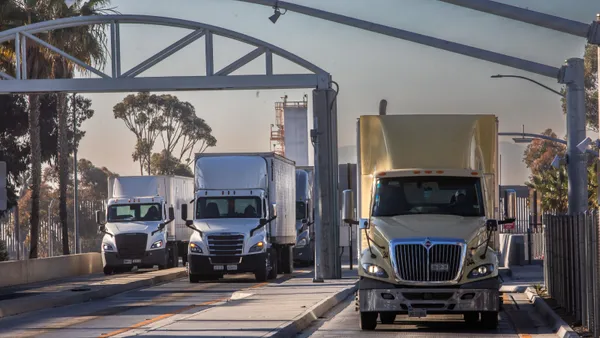Dive Brief:
- According to the 2017 ASCE Report Card, America's airports are heavily congested, serving approximately 2,246,004 passengers per day. Experts predict that 24 out of 30 major airports will soon see Thanksgiving-level crowds one day per week. Though passenger fees contribute to expansion and refurbishment, a $42 billion funding gap is expected to occur between 2016 and 2025.
- In 2012, the aviation industry contributed 11.8 million jobs, contributing 5.4% to the GDP.
- In 2015, there were 7,000 or more planes in the air at any point in time, and 8,727,691 commercial flights occurred in the year.
Dive Insight:
Funding remains an issue across the board for America's infrastructure, but the airways are one of the industries with a more narrow funding gap of $42 billion. Unlike other infrastructures, airports draw a large percentage of their funding from their cash flow, but even then, competitive a la carte ticket pricing has reduced ticket price revenue. ASCE estimates that a $1 per ticket tax would close much of the funding gap.
Aging airport facilities require a variety of improvement measures to raise their grade, including a permanent increase of user fees to support the Airport Improvement Program (AIP) via the Airport and Airway Trust Fund. These funds must be directed at airport capacity, air traffic, and airport maintenance rather than security, the last of which should be funded by other means.
Among other ASCE recommendations, the NextGen air traffic control system should be implemented as soon as possible, Congress should see fit to support the industry by creating ongoing reauthorization of programs to guarantee improvement funding, and the federally-imposed limit to Passenger Facility Charges (PFCs) should be removed so that airports may better fund their facilities.













